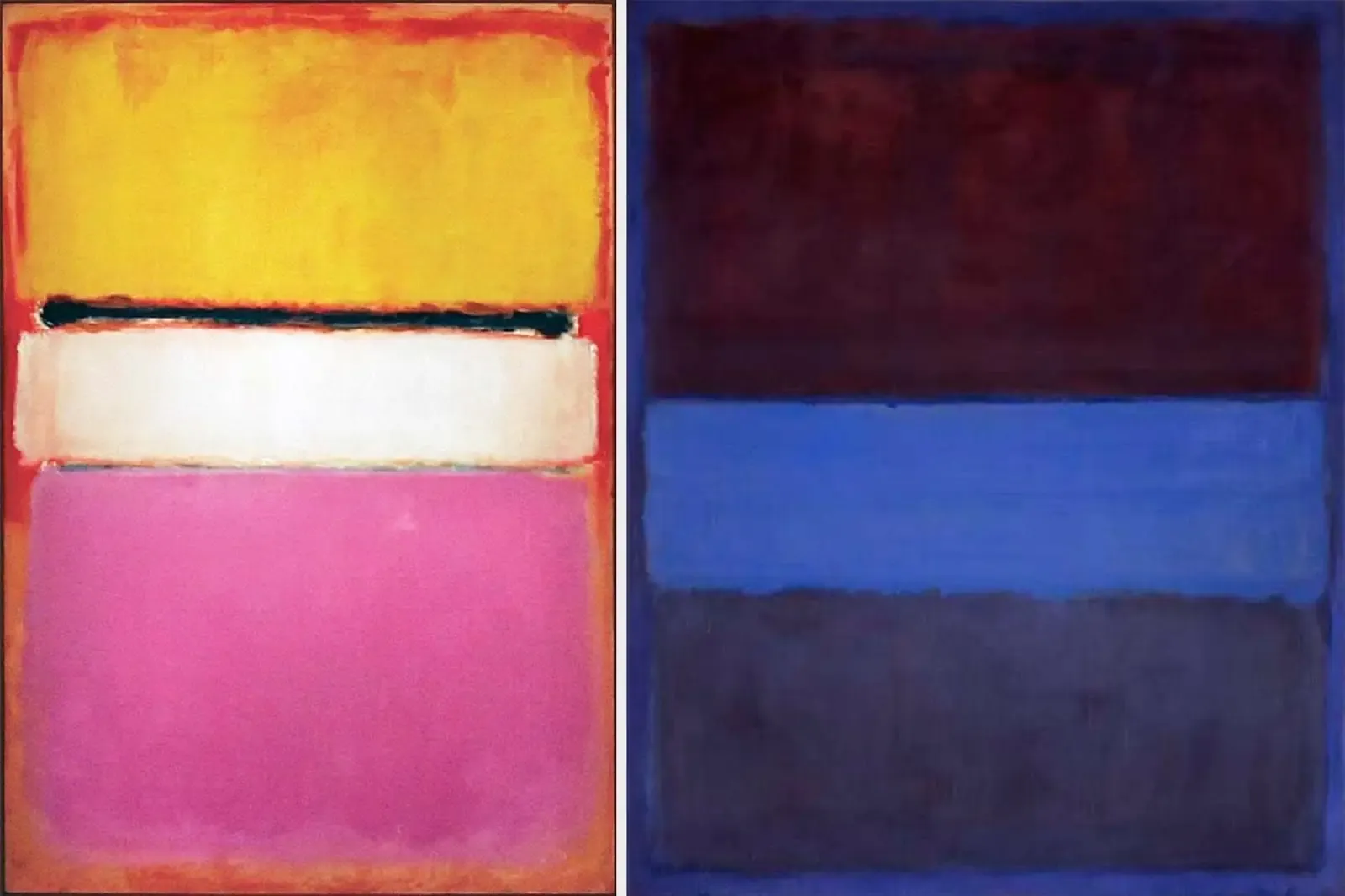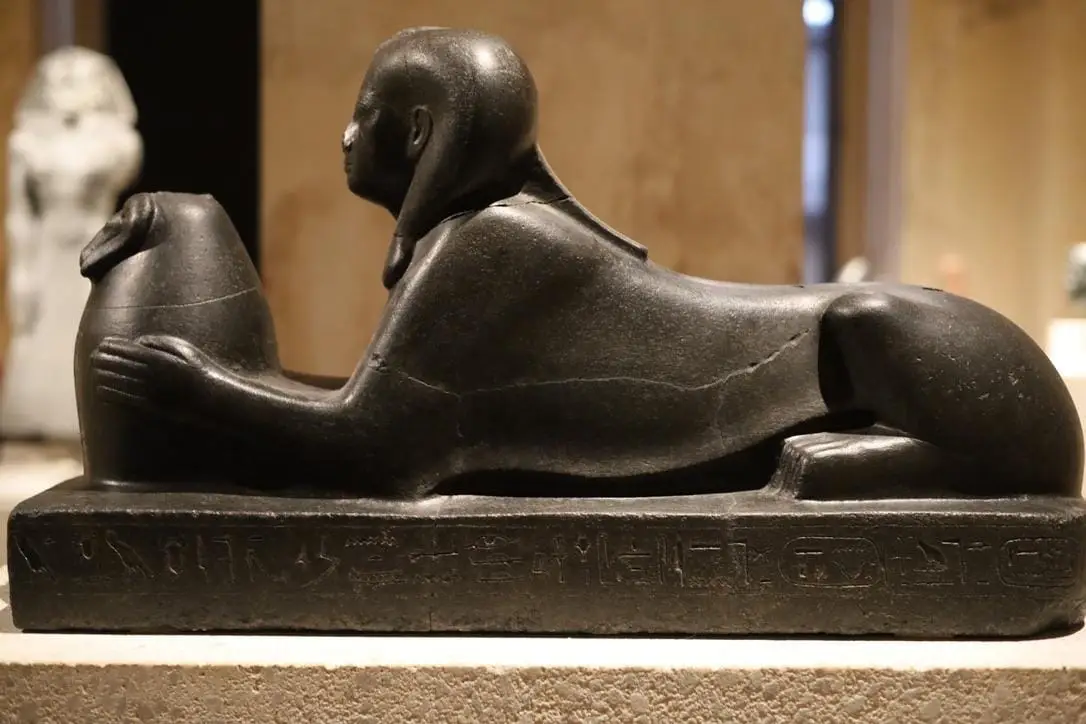Salvador Dalí’s Most Famous Paintings: A Journey Through Surrealism
Salvador Dalí stands as a pivotal figure in modern art who defied limits with his limitless surrealist imagination. The dreamlike imagery, meticulous detail and striking symbolism of his works continue to fascinate audiences around the world. Dalí emerged as a key figure in Surrealism after his birth in Figueres, Spain in 1904 as he expanded artistic expression and transformed reality representation on canvas. His capacity to blend subconscious visions with hyper-realistic details enabled him to produce some of art history's most renowned and intellectually stimulating paintings. His artworks stand the test of time as they remain significant in modern art debates and continue to motivate artists along with collectors and art fans.
Dalí’s Unique Approach to Surrealism and Influence
Dalí's version of surrealism relied heavily on Freudian psychoanalysis and the exploration of the subconscious mind. Dalí set himself apart from his peers who favored automatism to produce spontaneous artworks by utilizing the "paranoiac-critical method," which enabled him to capture the hallucinatory and irrational elements of the mind. Dalí created paintings that showcased surreal dreamscapes alongside melting objects and improbable juxtapositions which resisted logical interpretation. Through skilled application of trompe-l'œil methods along with exaggerated perspectives and bold color schemes he transformed his strange visions into unnervingly lifelike images. His most celebrated works prominently feature these distinctive elements which persist in captivating audiences and testing their perceptions.
Dalí's work influenced modern art deeply beyond his technical achievements. Dalí's fusion of classical methods with avant-garde surrealism encouraged multiple generations of artists to pursue surrealism including filmmakers and designers. Through his theatrical character and unique public performances, Dalí expanded surrealism's reach beyond fine arts into fashion and pop culture. Through his work with filmmakers such as Luis Buñuel and icons like Walt Disney his influence grew as his surrealist vision moved beyond painting to impact numerous artistic fields.
Gala: Dalí’s Muse and Creative Inspiration
Salvador Dalí’s wife Gala Dalí who was originally Elena Ivanovna Diakonova served as his primary muse and manager while playing a crucial role in his artistic achievements. Salvador Dalí met Gala in the late 1920s and she became his eternal partner who inspired his most renowned works. The artist frequently represents her in multiple paintings such as Galatea of the Spheres and Madonna of Port Lligat where she takes on a divine and ethereal appearance. Dalí immortalized Gala's beauty and presence as his guiding light through surreal and dreamlike artworks. Gala transcended her role as muse to become a key figure in managing Dalí's career by negotiating important deals and facilitating recognition for his art. The atypical nature of their relationship combined with her impact on his life and work provide essential insights into Dalí’s artistic brilliance.
Exploring Dalí’s Most Famous Paintings
The Persistence of Memory (1931) stands as perhaps Dalí's most iconic work among all his famous and influential paintings. Melting clocks draped over an eerie landscape characterize this small powerful painting which represents time as both fluid and subjective. This painting stands as a key demonstration of Dalí's skill in transforming everyday scenes into surreal visions that challenge the viewer's understanding of reality. The dreamlike nature of the composition has made it an essential work within surrealist art.
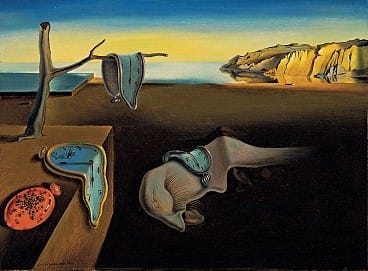
The artwork Swans Reflecting Elephants (1937) displays Dalí’s interest in visual tricks and dual images. The still waters of the lake reflect a twisted reality where swan images change into elephants. Dalí demonstrates his skillful control over perception by embedding concealed messages in his art that prompt viewers to look beyond the surface image. The placement of swans and elephants next to each other in the artwork expresses concepts of transformation alongside duality while reaching into the depths of the subconscious mind.
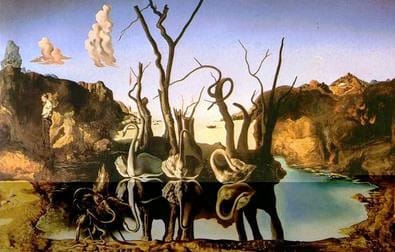
In The Elephants (1948), Dalí further developed surrealist methods to illustrate towering elephants with slender legs that support obelisks on their backs. These grand creatures take inspiration from Gian Lorenzo Bernini's sculptures to embody both lightness and vulnerability while displaying substantial power. The bizarre manipulation of proportions alongside the stark alien background generates a feeling of discomfort that showcases Dalí’s ability to manipulate reality.

The Burning Giraffe (1937) stands as one of Dalí’s most politically significant pieces which expresses the Spanish Civil War's upheaval. The artwork shows a skeletal female figure with exposed drawers emerging from her blue-toned body which represents concealed thoughts and subconscious fears. The background hosts a burning giraffe which powerfully represents chaos and destruction. Dalí referred to this repeating theme as a "masculine cosmic apocalyptic monster" to express his conviction that civilization was approaching an impending disaster.
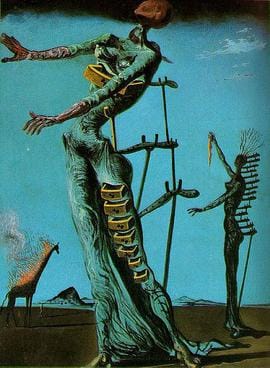
Religious themes became fundamental to Salvador Dalí's later artistic creations. The 1951 Christ of Saint John of the Cross stands out as a dramatic portrayal of Christ on the cross depicted from a rare heavenly viewpoint. The artwork avoids showing any physical injuries to Christ and presents him as a supernatural and celestial figure. Dalí originally created the painting from a dream which combined surreal elements with his emerging scientific and spiritual interests. This masterpiece has earned its place as one of the most respected religious paintings of the 20th century because of its stunning lighting and perfect execution.
Galatea of the Spheres (1952) demonstrates Dalí’s scientific and mathematical influences through its depiction of Gala as a portrait made up entirely of suspended spheres. Dalí’s painting embodies his interest in atomic theory and quantum mechanics by depicting matter as composed of minuscule invisible particles. The dreamlike effect of the artwork is enhanced by Gala’s ethereal fragmented appearance which provides intellectual stimulation through visual stimulation.
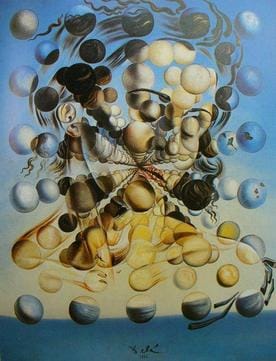
In The Hallucinogenic Toreador (1970) Dalí achieves an unparalleled combination of artistic illusion through his vibrant and complex creation that features multiple layers of imagery. Drawing from his childhood bullfighting experiences the artwork uses concealed shapes and dual images to develop a multilayered visual effect. The combination of shapes and colors in the artwork entices viewers to examine it more closely, revealing hidden details with each new observation.
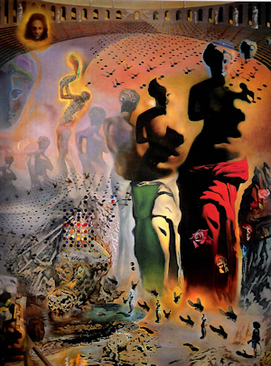
Metamorphosis of Narcissus (1937) demonstrates Dalí's artistic interpretation of the Greek myth about Narcissus. The painting shows the young man who stares into his reflection until he becomes a hand with an egg. The powerful image represents both the renewal of life and the delicate nature of self-obsession which remains a recurring theme throughout Dalí’s entire artistic portfolio.
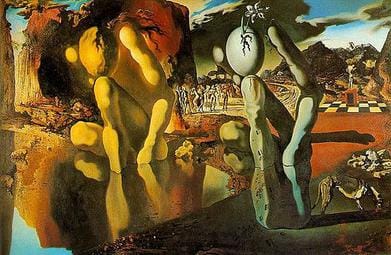
Dalí’s The Sacrament of the Last Supper (1955) merges religious themes with surrealism inside a classical framework. Ethereal light surrounds Christ and his disciples who stand within an immense geometric space in the painting. This artwork achieves masterful status within religious and surrealist art through its dreamlike atmosphere alongside Dalí's meticulous craftsmanship.

In Dalí’s Crucifixion (Corpus Hypercubus) (1954) he offers an original and boundary-pushing vision of Christ’s crucifixion. Dalí's representation of Christ breaking from traditional depictions through the use of a floating unfolded hypercube (tesseract) showcases his passion for mathematics and science as well as his interest in the fourth dimension. Without the presence of nails and physical pain the artwork becomes a mystical vision that emphasizes spiritual transcendence above physical suffering. Dalí’s wife Gala who served as his muse adds both personal and spiritual depth to the artwork while she stands in reverence below. Through this painting Dalí combines elements of surrealism with Catholic beliefs and scientific concepts to create one of his most intellectually significant works.
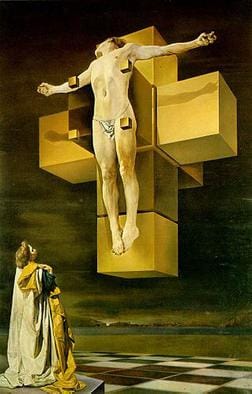
The paintings Dream Caused by the Flight of a Bee Around a Pomegranate a Second Before Awakening (1944) and Soft Construction with Boiled Beans (Premonition of Civil War) (1936) showcase Dalí’s exceptional talent for merging dream imagery with psychological and political concepts which secured his pioneering role in surrealist art.
The Value of Dalí’s Famous Paintings
Dalí's works have achieved such widespread popularity that they have become highly sought-after assets in the high-value art collecting market. Auction sales of original Dalí paintings have reached million-dollar figures while masterpieces such as The Persistence of Memory and The Sacrament of the Last Supper stay as top desired pieces in the art market. Art institutions and private collectors around the world actively vie for ownership of his masterpieces which confirms his position as one of history's most commercially triumphant artists. Salvador Dalí's most famous paintings hold value because they represent both artistic excellence and cultural-historical importance.
The works created by Dalí maintain strong interest at distinguished auction houses including Christie’s and Sotheby’s because collectors actively submit bids for his surrealist masterpieces. Record-breaking prices for his paintings, drawings, and sculptures demonstrate his sustained influence in the art world and strong market demand. The Portrait of Paul Éluard created in 1929 fetched over $21 million at Sotheby’s which underscores the significant value collectors place on Dalí’s early surrealist creations. Due to his diverse artistic talents which cover painting, sculpture as well as furniture design Dalí's works continue to attract a high level of demand. His combination of artistic excellence with commercial achievement has established his status as one of the modern art market's most esteemed and valuable artists.
Dalí’s Lasting Legacy
The influence of Dalí in the art world reaches well past his canvas creations. The fusion of dreamlike imagery with precise realistic elements in his work has motivated numerous artists from different fields to push creative boundaries. The artistic vision of Dalí extends beyond traditional media because his impact appears in contemporary surrealism and permeates fashion design, filmmaking and advertising. His works remain subjects of study and exhibitions and continue to receive admiration which preserves his legacy for upcoming generations.


